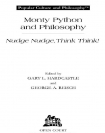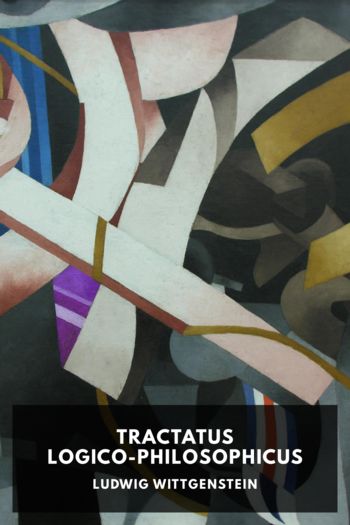Monty Python and Philosophy, Gary Hardcastle [portable ebook reader TXT] 📗

- Author: Gary Hardcastle
Book online «Monty Python and Philosophy, Gary Hardcastle [portable ebook reader TXT] 📗». Author Gary Hardcastle
Who’s Afraid of Mr. Creosote?
Creosote is a monster and he incurs our disgust. So far the horror formula is realized. But two points need to be made. First, disgust, including disgust elicited by the violation of our standing norms and categories, does not belong solely to the domain of the genre of horror. It is, as noted earlier, also a natural ingredient of comedy. This, of course, should be extremely evident. Think of how much humor, especially juvenile humor, hinges on celebrating disgusting things—farts, feces, and slime. Insofar as mention of these things, which are themselves categorically interstitial (ambiguously both part of me and outside of me), is also a violation of the norms of propriety, they are staples of humor. Disgust, that is, belongs as much to comedy as to horror. But in order for a categorical violation to turn into an occasion for horror, something else must be added, namely, fear. So the second point to be addressed is whether the fear-condition for the elicitation of horror has been met in the Creosote sequence. For if it has not been, then we can start to explain why the Creosote scene is comic rather than horrific.
In horror fictions, the monster is fearsome and disgusting because it is dangerous and impure. Standardly, the monster in a horror fiction is not threatening to the audience. They know that they are encountering a fiction and that they can suffer no harm from the creatures that rule the page and the screen. Rather they feel fear for the humans in the fiction who are being stalked or otherwise imperiled by the monsters. Insofar as we feel concern for the plight of those fictional characters—that is, insofar as we anticipate that harm will befall them at the hands, talons, or other instruments of the monsters—the fear condition of the horror formula is activated.
However, when we turn to the scene with Mr. Creosote, there is no fear factor. We do not fear for the other customers in the restaurant. They are in no great danger from Mr. Creosote. They are unquestionably offended by him. This may garner some sympathy for them (or, it may not, if you regard them as insufferable swells deserving of being taken down a peg). But it will not elicit fear in their behalf, since they are in no grievous danger, bodily or otherwise.
But perhaps Creosote is the human who should elicit our concern. After all, he’s a person (ain’t he got some rights?), and he does explode. And he is harmed by the machinations of the maitre d’. However, here Creosote shows us something about how comedy works. Creosote is not quite human. Not only is he too outsized. But he is utterly impervious to his repeated bouts of nausea—what human can take fits of retching in his stride the way Creosote does?—and he, of course, survives the massive explosion of his belly. In this, Creosote not only resembles the monster of horror fictions. He also resembles that staple of slapstick comedy, the clown.
The clown is not exactly human. With respect of our norms for the average human, the clown is either too fat or too tall, too thin or too short. His mouth is painted to appear exaggeratedly large and his eyes and head are often too small. He is a misproportioned human. Nor are his cognitive skills near the norm; generally he is too stupid. And his body can also take abuse that no actual person could. He can be hit on the head with a sledge hammer and suffer no more than a dizzy swoon where the rest of us would be hospitalized with a concussion. He takes falls with abandon and always pops up for another slam. It is as if his bones were made of rubber. Instead of breaking, they snap back into place.
It’s because the clown is marked as so ontologically different from us—especially in terms of his imperviousness to bodily harm—that we have no fear for his life and limb. We can laugh at the way in which his body with its incongruities taunts our concept of the human, because the mayhem the clown engages is nonthreatening. We need not fear for the clown; nor, in the standard case, need we fear clowns. They are, for the most part, benign. Thus, though monstrous, clowns and the other denizens of slapstick incur no horror, since no genuine harm will result in or from their shenanigans.
Mr. Creosote belongs to the same fantastic species as the clown. He is not precisely human, so we do not fear for him as we do for the characters in horror fictions. He is able to suffer through things that would incapacitate or destroy ordinary mortals, because he is marked as of a different ontological order. Because Creosote can neither harm nor can he be harmed, his monstrosity becomes an occasion for comic amusement rather than horror. This is one thing that Mr. Creosote shows us about laughter.
It has been established experimentally that children will laugh when confronted with something incongruous—like a “funny face”—if the face is offered by someone with whom they are familiar, but they will cringe if it is presented by a stranger. This suggests that our responses to incongruities, anomalies, unexpected deviations from norms and standing categories





Comments (0)